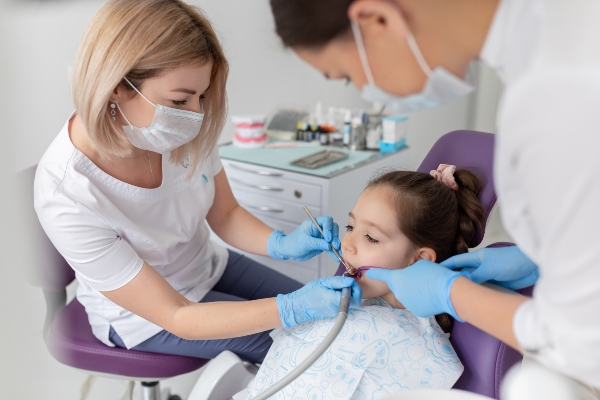Phase 1 Orthodontic Checkup to Detect Jaw Growth and Tooth Devlopement

A Phase 1 orthodontic checkup is a crucial element of your child’s dental health. Finding out if your child needs braces is crucial for your child’s health and well-being. The way to do this is to take your child to a Phase 1 orthodontic appointment with your pediatric orthodontist. If you want to understand the detection of jaw growth and tooth development during a Phase 1 orthodontic checkup, here are the details.
Jaw growth
Jaw growth is the result of its environment’s impact. Genetics plays a small role in how the jaw develops. The development of the jaw depends on the soft tissue and muscles of the face. A few examples of dysfunction in the soft tissue and muscles include prolonged pacifier or thumb-sucking habits, low tongue posture, and mouth breathing. A Phase 1 orthodontic appointment enables the pediatric orthodontist to assess a child’s jaw growth. The resting posture of the mouth influences the correct facial development.
The upper jawbone (maxilla) and lower jawbone (mandible) occupy the face’s lower half. There is no appropriate jaw development if the child does not have the three aspects of the resting oral posture. The child will likely develop long-face syndrome or midface deficiency. Phase 1 orthodontic evaluation includes checking jaw joint health and correct airway development.
The pediatric orthodontist will also assess the proper tongue positioning of the child. The proper position of the tongue influences the proper growth of the jaw and face. The tongue should touch the roof of the mouth while resting. Poor oral resting position and mouth breathing result in small jaws. This will not provide enough room for the eruption of permanent teeth.
Tooth development
Parents should bring their child in for a Phase 1 orthodontic checkup at around six or seven years old. Permanent teeth start to erupt at this age. The first adult teeth are also called six-year molars or first molars. These teeth erupt behind the baby teeth. At the mentioned age range, the roots of the baby teeth start weakening. Children will keep losing baby teeth until about 12 years old.
The Phase 1 orthodontic appointment will tell the pediatric orthodontist if the baby teeth are starting to wiggle. Parents should not worry at this stage because losing baby teeth will not result in severe bleeding. The pediatric orthodontist will check if the child’s permanent teeth have erupted or are starting to show. A visual examination and dental X-rays can help with the evaluation. Then, the pediatric orthodontist will assess if the teeth are coming in the right way. If the child is a mouth breather, then correcting the bite and teeth alignment should be a priority as the permanent teeth come in.
A Phase 1 orthodontic checkup is necessary for your child’s oral and general health
Bringing a child in for a Phase 1 orthodontic appointment should be a priority. It can help your child have a chance at proper oral health and teeth alignment before adulthood. The pediatric orthodontist will assist you in caring for your child’s teeth and gums as the permanent teeth erupt. A Phase 1 orthodontic appointment will start your child’s journey to optimal oral and general health with early braces.
Are you considering having a Phase 1 orthodontic checkup in the Richmond area? Get more information at https://www.grandparkwaypediatricdental.com.
Check out what others are saying about our dental services on Yelp: Phase 1 Orthodontic in Richmond, TX.
Recent Posts
Dental fillings for kids can be nerve-wracking for some kids, likely due to the necessary tools. While we aim to make this simple process as smooth and painless as possible, we need your help. Getting a firm grasp on what your kids can expect during this procedure and how to prevent a future need for…
Getting dental fillings for kids can help improve your child’s dental health. It can restore the affected teeth and relieve your child’s pain. Understanding the process can help you prepare your child for the next appointment. Here are the details on what parents like you must know about dental fillings for kids.The dentist will discuss…
Child teeth whitening can make a significant difference in a kid’s self-esteem, especially as they grow older and become more aware of their appearance. However, many parents wonder whether whitening is safe and appropriate. A pediatric dentist can tailor teeth whitening to younger patients, focusing on restoring a natural, healthy smile while protecting developing teeth…
Dental fillings for kids are often associated with different tools and instruments. It could be your child’s first dental treatment. Dental anxiety may take over the dental visit. Knowing how your pediatric dentist eases anxiety can give you peace of mind. Here are the techniques dentists use to ease your child’s anxiety and stress while…


